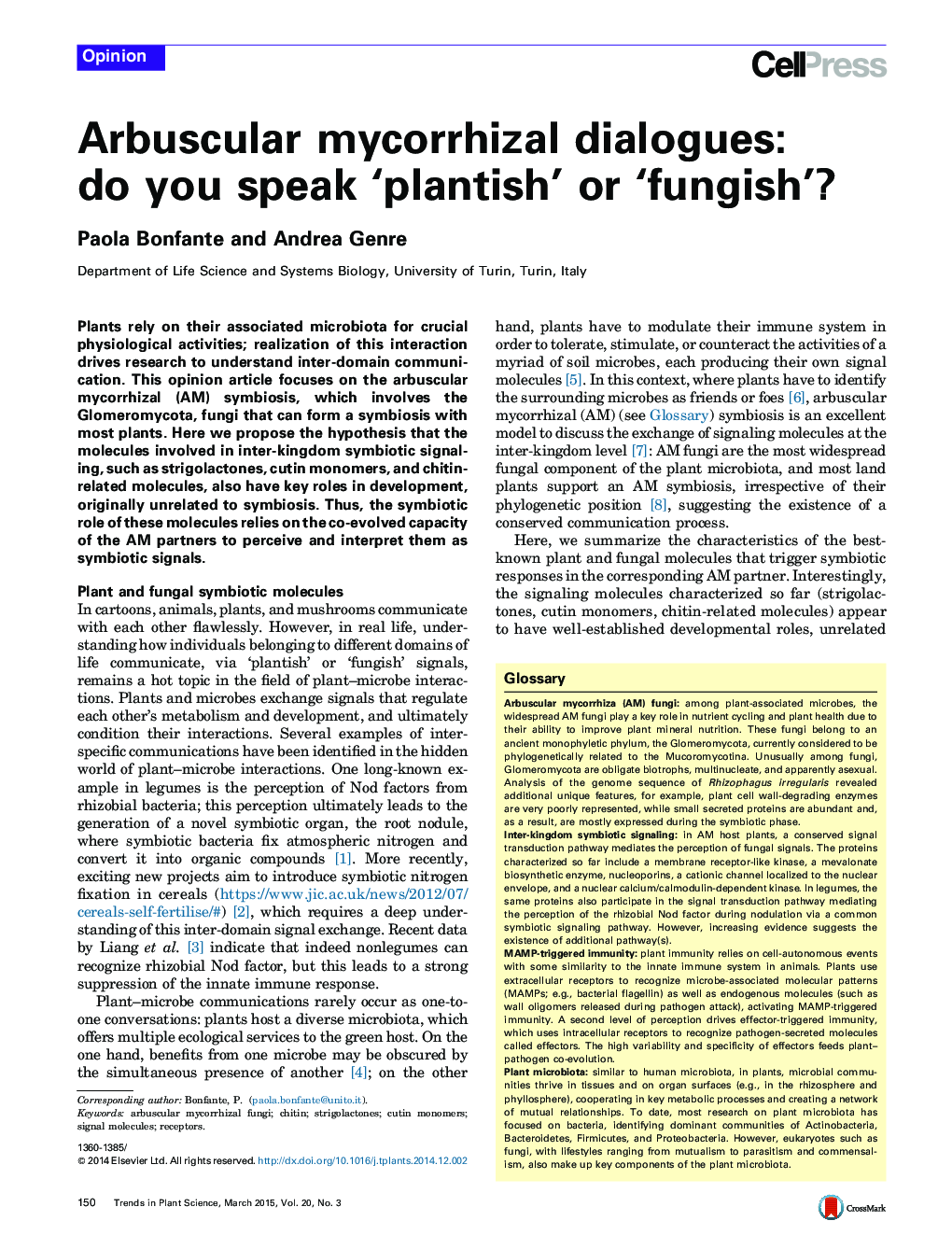| Article ID | Journal | Published Year | Pages | File Type |
|---|---|---|---|---|
| 2825804 | Trends in Plant Science | 2015 | 5 Pages |
•Plants rely on their associated microbiota for crucial physiological activities.•We focus on the arbuscular mycorrhizal (AM) symbiosis that involves the Glomeromycota fungi.•We propose that the molecules involved in inter-kingdom symbiotic signaling have key roles originally unrelated to symbiosis.•Thus, the symbiotic role of these molecules relies on the co-evolved capacity of the AM partners to perceive and interpret them as symbiotic signals.
Plants rely on their associated microbiota for crucial physiological activities; realization of this interaction drives research to understand inter-domain communication. This opinion article focuses on the arbuscular mycorrhizal (AM) symbiosis, which involves the Glomeromycota, fungi that can form a symbiosis with most plants. Here we propose the hypothesis that the molecules involved in inter-kingdom symbiotic signaling, such as strigolactones, cutin monomers, and chitin-related molecules, also have key roles in development, originally unrelated to symbiosis. Thus, the symbiotic role of these molecules relies on the co-evolved capacity of the AM partners to perceive and interpret them as symbiotic signals.
